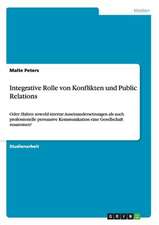Proposing Empirical Research: A Guide to the Fundamentals
Autor Mildred L. Patten, Melisa C. Galvanen Limba Engleză Paperback – 28 aug 2019
The structure of the book enables students to work independently with confidence while writing the first drafts of their proposals. Each major section is divided into short topics and for each topic, students are asked to complete an exercise that leads them toward the goal of preparing a proposal. Numerous illustrative examples throughout the book make the recommendations for proposal writing come alive. In addition, the 10 model proposals provided at the end of the book illustrate proposal writing and provide material for classroom discussions.
New to the Sixth Edition:
- Updates throughout to reflect research and learning in the digital/online environment, e.g., online surveys, digital organization tools, digital recruitment methods for research, and digital databases, records, and archives.
- Discussion of qualitative methods.
- Updated references, model proposals, end of chapter exercises etc.
| Toate formatele și edițiile | Preț | Express |
|---|---|---|
| Paperback (1) | 429.47 lei 43-57 zile | |
| Taylor & Francis – 28 aug 2019 | 429.47 lei 43-57 zile | |
| Hardback (1) | 1282.49 lei 43-57 zile | |
| Taylor & Francis – 5 sep 2019 | 1282.49 lei 43-57 zile |
Preț: 429.47 lei
Preț vechi: 505.26 lei
-15% Nou
Puncte Express: 644
Preț estimativ în valută:
82.19€ • 85.49$ • 67.85£
82.19€ • 85.49$ • 67.85£
Carte tipărită la comandă
Livrare economică 14-28 aprilie
Preluare comenzi: 021 569.72.76
Specificații
ISBN-13: 9781138615632
ISBN-10: 1138615633
Pagini: 216
Ilustrații: 3 Line drawings, black and white; 8 Tables, black and white; 3 Illustrations, black and white
Dimensiuni: 210 x 280 x 15 mm
Greutate: 0.52 kg
Ediția:Nouă
Editura: Taylor & Francis
Colecția Routledge
Locul publicării:Oxford, United Kingdom
ISBN-10: 1138615633
Pagini: 216
Ilustrații: 3 Line drawings, black and white; 8 Tables, black and white; 3 Illustrations, black and white
Dimensiuni: 210 x 280 x 15 mm
Greutate: 0.52 kg
Ediția:Nouă
Editura: Taylor & Francis
Colecția Routledge
Locul publicării:Oxford, United Kingdom
Public țintă
Postgraduate and UndergraduateCuprins
Introduction to the Sixth Edition
Part A: Getting Started
Topic 1. What Is Empirical Research?
Topic 2. Identifying Broad Problem Areas
Topic 3. Evaluating Broad Problem Areas
Topic 4. Identifying and Combining Variables
Topic 5. Identifying Treatment Variables
Topic 6. Considering Demographic Variables
Topic 7. Writing Purposes and Hypotheses
Part B: A Closer Look at Problem Selection
Topic 8. Finding Ideas in the Literature
Topic 9. Considering a Body of Literature
Topic 10. Considering Theories and Frameworks
Topic 11. Determining Feasibility
Part C: Selecting a Research Approach
Topic 12. Qualitative Research
Topic 13. Survey Research
Topic 14. Correlational Research
Topic 15. Test Development Research
Topic 16. Experimental Research
Topic 17. Causal-Comparative Research
Topic 18. Program Evaluation
Part D: Organizing and Evaluating Literature
Topic 19. Organizing Literature by Topics
Topic 20. Evaluating Research Literature
Topic 21. Considering the History of a Topic
Part E: Application and Writing
Topic 22. A Separate Introduction
Topic 23. An Integrated Introduction and Literature Review
Topic 24. Writing the First Paragraph(s)
Topic 25. Using a Topic Outline
Topic 26. Being Selective and Critical
Part F: Proposing a Sample
Topic 27. Sampling in Qualitative Research
Topic 28. Random Sampling
Topic 29. Other Methods of Sampling: I
Topic 30. Other Methods of Sampling: II
Topic 31. Sample Size
Part G: Proposing Instrumentation
Topic 32. Qualitative Instrumentation
Topic 33. Proposing Published Instruments
Topic 34. Proposing New Instruments
Topic 35. Proposing to Measure Demographics
Topic 36. Ethical Issues in Measurement Methods
Part H: Proposing Procedures
Topic 37. Nonexperimental Procedures
Topic 38. Procedures in Experiments
Topic 39. Ethical Issues and Procedures
Part I: Proposing Methods of Analysis
Topic 40. Qualitative Analysis
Topic 41. Analysis of Demographics
Topic 42. Relationships: Nominal
Topic 43. Relationships: Equal Interval
Topic 44. Group Differences
Part J: Writing the Discussion and Other Concluding Tasks
Topic 45. Writing a Discussion Section
Topic 46. Giving the Proposal a Title
Topic 47. Preparing an Abstract
Topic 48. Developing a Timeline
Topic 49. Preparing a Reference List
Part K: Model Research Proposals for Discussion
Model Proposal 1: A Survey
Model Proposal 2: A Survey
Model Proposal 3: Test Development Research
Model Proposal 4: Single-Subject Research
Model Proposal 5: Quasi-Experimental Research
Model Proposal 6: True Experiment
Model Proposal 7: Qualitative Research with Focus Groups
Model Proposal 8: Qualitative Research with Interviews
Model Proposal 9: Combined Qualitative and Quantitative Research
Model Proposal 10: Ethnographic Study
Appendix A: Locating Literature Electronically
Appendix B: Electronic Sources of Statistical Information
Part A: Getting Started
Topic 1. What Is Empirical Research?
Topic 2. Identifying Broad Problem Areas
Topic 3. Evaluating Broad Problem Areas
Topic 4. Identifying and Combining Variables
Topic 5. Identifying Treatment Variables
Topic 6. Considering Demographic Variables
Topic 7. Writing Purposes and Hypotheses
Part B: A Closer Look at Problem Selection
Topic 8. Finding Ideas in the Literature
Topic 9. Considering a Body of Literature
Topic 10. Considering Theories and Frameworks
Topic 11. Determining Feasibility
Part C: Selecting a Research Approach
Topic 12. Qualitative Research
Topic 13. Survey Research
Topic 14. Correlational Research
Topic 15. Test Development Research
Topic 16. Experimental Research
Topic 17. Causal-Comparative Research
Topic 18. Program Evaluation
Part D: Organizing and Evaluating Literature
Topic 19. Organizing Literature by Topics
Topic 20. Evaluating Research Literature
Topic 21. Considering the History of a Topic
Part E: Application and Writing
Topic 22. A Separate Introduction
Topic 23. An Integrated Introduction and Literature Review
Topic 24. Writing the First Paragraph(s)
Topic 25. Using a Topic Outline
Topic 26. Being Selective and Critical
Part F: Proposing a Sample
Topic 27. Sampling in Qualitative Research
Topic 28. Random Sampling
Topic 29. Other Methods of Sampling: I
Topic 30. Other Methods of Sampling: II
Topic 31. Sample Size
Part G: Proposing Instrumentation
Topic 32. Qualitative Instrumentation
Topic 33. Proposing Published Instruments
Topic 34. Proposing New Instruments
Topic 35. Proposing to Measure Demographics
Topic 36. Ethical Issues in Measurement Methods
Part H: Proposing Procedures
Topic 37. Nonexperimental Procedures
Topic 38. Procedures in Experiments
Topic 39. Ethical Issues and Procedures
Part I: Proposing Methods of Analysis
Topic 40. Qualitative Analysis
Topic 41. Analysis of Demographics
Topic 42. Relationships: Nominal
Topic 43. Relationships: Equal Interval
Topic 44. Group Differences
Part J: Writing the Discussion and Other Concluding Tasks
Topic 45. Writing a Discussion Section
Topic 46. Giving the Proposal a Title
Topic 47. Preparing an Abstract
Topic 48. Developing a Timeline
Topic 49. Preparing a Reference List
Part K: Model Research Proposals for Discussion
Model Proposal 1: A Survey
Model Proposal 2: A Survey
Model Proposal 3: Test Development Research
Model Proposal 4: Single-Subject Research
Model Proposal 5: Quasi-Experimental Research
Model Proposal 6: True Experiment
Model Proposal 7: Qualitative Research with Focus Groups
Model Proposal 8: Qualitative Research with Interviews
Model Proposal 9: Combined Qualitative and Quantitative Research
Model Proposal 10: Ethnographic Study
Appendix A: Locating Literature Electronically
Appendix B: Electronic Sources of Statistical Information
Notă biografică
Melisa C. Galvan is Assistant Professor at California State University, Northridge.
Descriere
This book provides concrete guidance for students who will be writing proposals for both quantitative and qualitative research. Structured around the stages of the proposal process, each major section is divided into short topics










